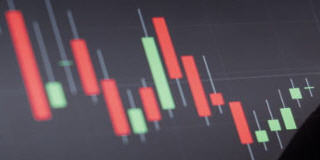Test NanoTrader Full I Test Tradingview I Test the mobile platforms All for CFD-Forex & Futures
You are here
A guide to volatility trading

Markets are always on the move, but the speed and size of price changes is what creates opportunities (and risk) for traders. So, let’s take a look at how to trade volatility, and which markets experience the highest levels of volatility.
What is market volatility?
Market volatility is the rate at which an asset’s price increases or decreases over a period of time. It’s used to describe short-term, rapid price movements. While most financial markets experience intraday movements, volatility is defined by the speed and degree of change. Volatility is seen as an indicator of the levels of fear on the market. When there is uncertainty, price movements can become erratic and unpredictable as even the smallest piece of news can cause outsized price movements.
What causes market volatility?
Volatility is caused by increased uncertainty, whether that’s market-wide, in a particular asset class or a single company’s stock. But there are plenty of factors that can unnerve markets, including:
Politics – the decisions made by governments and political leaders on trade agreements, policy and legislation can cause strong reactions among traders and investors. As an extreme example, when Russia invaded Ukraine it sent shockwaves through markets as supply chain fears caused commodity prices to soar.
Economic data – when the economy is doing well, markets tend to react favourably. When data releases show a negative market performance or miss market expectations, it can cause volatility. Examples include such jobs reports, inflation, consumer spending and GDP
Industry news – company shares, indices or commodities can be impacted by industry-specific events, such as extreme weather conditions, strikes and supply-chain disruptions. For example, the global chip shortage caused volatility across the shares of semiconductor producers and the auto-manufacturers, as companies were forced to delay orders for over 6 months.
Company news – corporate actions, earnings reports and even rumours can cause volatility in share prices. The larger moves are caused by an announcement differing from the expectations, and ‘surprising’ markets
Another key driver of volatility is liquidity. The more traders and investors on the market, willing to buy and sell an asset, the less likely it is that a single transaction will cause a large price move. So, less liquid markets are usually more volatile as prices can change drastically.
How is market volatility measured?
Market volatility is measured using standard deviations. This metric takes a market’s annualised returns over a given period and subtracts it from the current market price to see any variances. Volatility is most commonly analysed using Bollinger Bands. This technical indicator is comprised of a simple moving average, and two bands placed a standard deviation above and below the SMA. Bollinger Bands enable traders to see a smoothed-out version of an asset’s price history. The level of volatility is measured by the width of the bands. The further apart the bands are from the SMA, the more volatile the price has been within the range. When a market experiencing comparatively low volatility, the Bollinger Bands appear closer together.
How to trade high volatility
Day traders tend to prefer high volatility because it creates more opportunities for short-term speculation. When large swings occur, it increases the chance for bigger profits in a smaller timeframe. But it does also increase the risks, as a market can move against you just as quickly. That’s why it’s important to understand your risk appetite before you even start to think about trading volatility. If you’re uncomfortable in high risk scenarios, then trading volatile markets probably isn’t for you. But, if you’re interested in the potential to profit from the fast-paced changes, then the appropriate trading strategy can help you to harness the market changes.
You can trade both highly volatile markets, or volatility-based assets – such as the VIX – that track the level of uncertainty in the market.
Most volatile markets
Volatility is relative. Price changes that are considered a highly volatile period for one asset class, might be fairly tame for another. Broadly speaking, some of the most volatile markets you can trade are:
Cryptocurrencies
Commodities
Exotic currency pairs
High-volatility stocks



